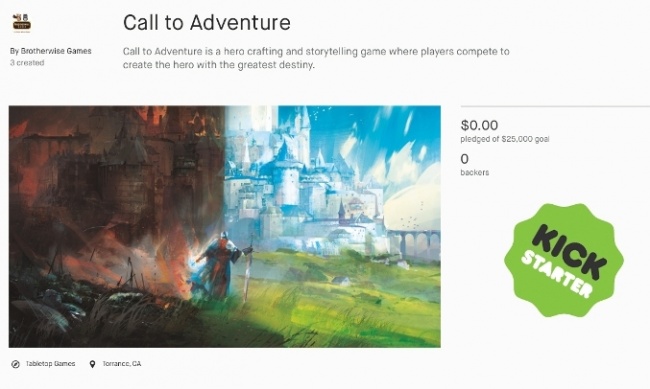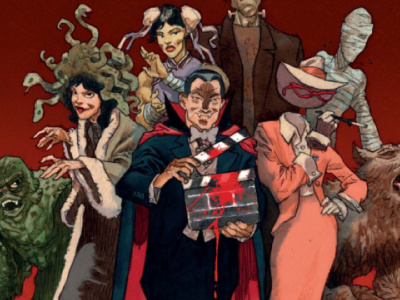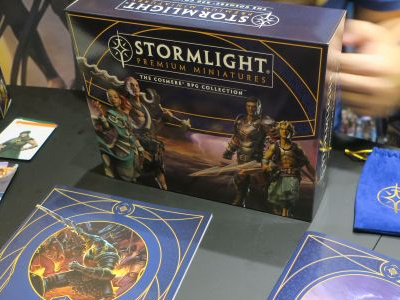Making the Game is a monthly guest column by Chris O’Neal of Brotherwise Games. Making the Game follows a year in the life of an indie tabletop publisher as they attempt to bring their third game to market. In this month's column on developing a new game, O’Neal reveals his learnings on the pros and cons of Kickstarter.
Next month, Brotherwise Games will take our latest game, Call to Adventure, to Kickstarter. For us, it will be a return to the medium that got everything started back in 2012, when our first game, Boss Monster, was a surprise Kickstarter success that then made the even more surprising leap to retail. Views on Kickstarted games have evolved a lot in the last five years, but it’s still a somewhat contentious way to launch new games, as evidenced by Ninja Division’s announcement this week that they won’t be launching games on the popular crowdfunding platform anymore (see “Ninja Division Pulling Back from Kickstarter”). In this month’s column, I’m going to address some of the pluses and minuses of Kickstarter from a small publisher’s point of view.
I’ll begin with the benefits. Most obviously, there’s simply no denying the exposure that Kickstarter continues to offer. As complete unknowns in 2012, Brotherwise was able to get Boss Monster in front of tens of thousands of gamers. Back then, Kickstarter provided an entrée to the gaming world when the previous gatekeeper had always been established publishers. We did not try the traditional submission route for Boss Monster, but we suspected that our core audience, casual gamers and their friends, were best reached through the new and exciting tool of crowd funding. Even today, when there are hundreds of new games on Kickstarter at any given time, Kickstarter levels the playing field between the established publishing giants and smaller outfits like ours, getting our games exposure and buzz. And yes, we’re absolutely sympathetic to the argument that as companies like ours grow, they shouldn’t return to that well too many times, and that’s why, after Boss Monster’s second standalone expansion, we no longer Kickstarted Boss Monster games.
But with a new, unknown game like Call to Adventure, Kickstarter offers more than just exposure. Starting from the very first days of the Boss Monster Kickstarter, we noticed a core community of backers who were completely devoted to the game. As backers, they had established their own stake in the game and were eager for it to succeed. They talked to each other; they talked to their friends; they recruited more backers who got equally excited about the game. When Boss Monster launched in hobby stores six months after the Kickstarter closed, it launched with a community of dedicated fans already in place. Without that ready-made community advocating for you, new games can still spread through conventions and game stores, but there’s no denying that Kickstarter helps.
The last benefit of Kickstarter I’ll talk about is a less obvious and tangible one, and it’s more about crafting the story of your game than anything else. Kickstarter forces small companies like ours to think beyond the tabletop and consider how their game should be presented. What’s the hook? What’s the story that brings players in? How am I going to market this game in the long run? Kickstarter’s video-focused format, and even its pledge levels, forces creators to craft a story that has legs. We’re still using taglines from our original Kickstarter to sell Boss Monster. Are you the baddest dude in the land?
Of course there are downsides to crowdfunding, the primary one being the perception of game sales as a zero-sum game. The narrative goes something like this: if you, the publisher of the game, make sales on Kickstarter, I, the distributor or retailer, am likely to see less sales on my end. We think the truth is more complex than that. If we do our job right – if we focus on creating a devoted community of backers, rather than just making the most sales we can, our Kickstarter campaign should promote the long term sales of a game rather than depriving retailers of short term sales. This has certainly been the case with Boss Monster. Our initial Boss Monster campaign recruited about 4,600 backers. It seemed like a lot at the time, but since then, we’ve gone on to sell hundreds of thousands of copies more through traditional channels. If that initial Kickstarter hadn’t happened, I think it’s fairly safe to say Boss Monster would not have been the successful seller for retailers it has been.
This is not to say Kickstarter isn’t problematic. In his statement, Ninja Division’s John Cadice was calling out the increasingly fraught nature of online interactions like these. Jamey Stegmaier of Stonemaier games has called out this issue as well, multiple times, and it seems to have played at least some small part in Stonemaier’s decision to leave Kickstarter behind. Indeed, Kickstarter projects can fall prey to the “too many cooks” problems easily. That same positive community on Kickstarter can turn toxic if a vocal group advocates for a change to your game that you, the creators, feel uncomfortable with. We saw this with our Boss Monster 2 Kickstarter, where a vocal minority of backers were disappointed with some of our decisions on the campaign, and let us know…repeatedly. It stung at the time, but it’s important to remember that they were vocal because they were passionate. We learned some important lessons during that campaign about harnessing the community’s passion and directing it toward making the game the best it can be.
Last, all the positives aside, I will say that I’m worried about recent trends towards “Kickstarter-only” games. I can understand why we’re seeing them. From a publisher’s point of view, so many new games are coming out each month that the sales tail for most new games is dwindling far faster than it has in the past. “Get in quick, get out quick” is certainly an enticing option, but I think we’ll pay in the long run if too many publishers follow that path. Game stores are not middle men. They are not taking a cut of profits. They are an essential part of the ecosystem of selling games and as publishers, we bypass them at our peril. The glut of games will not last forever, but the community of gaming, I think, will. At Brotherwise, we’ll be looking for strategies that let us use crowdfunding to complement the publisher-distributor-retailer symbiosis, not disrupt it.
The opinions expressed in this column are solely those of the writer, and do not necessarily reflect the views of the editorial staff of ICv2.com.








